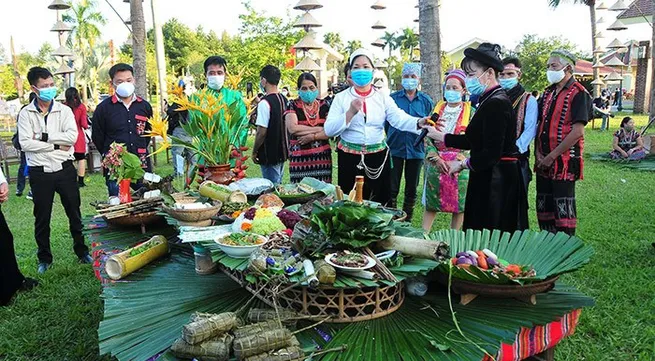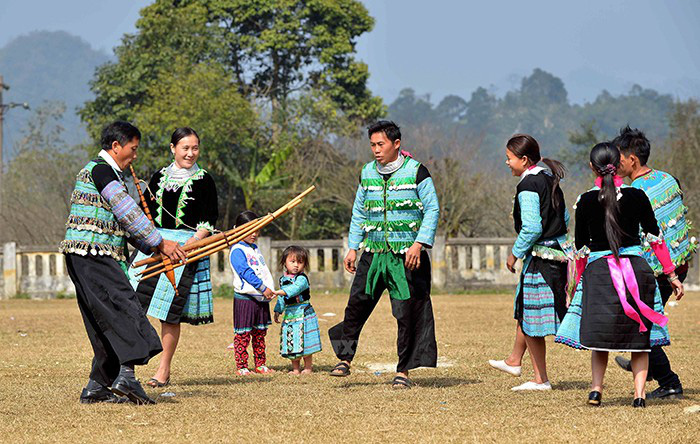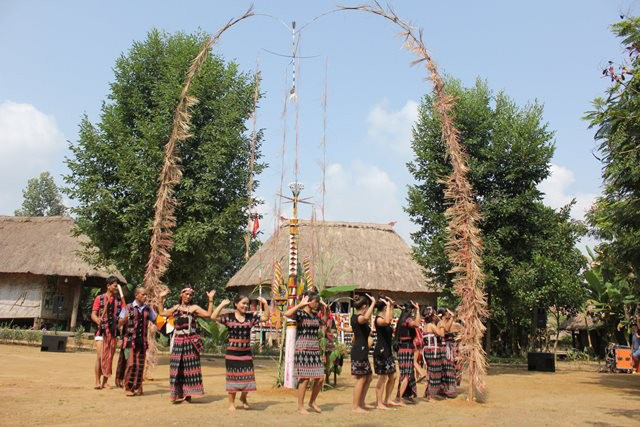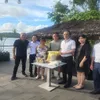Programme honours colours of Vietnamese ethnic groups

The programme aims to honour the Vietnamese Ethnic Groups’ Culture Day of (April 19) while introducing visitors to the culture, customs and practices of ethnic minorities.
Under the programme, the organising board has created a colourful space featuring cultures of ethnic groups of the Northwest and Northeast regions, with the highlight being the reproduction of a rural market entitled ‘Colours of Lao Cai’.
The market will host folk songs, dances, folk games, cuisine, and handicraft products of the Mong, Dao, and Thai ethnic groups in Lao Cai Province.
Another traditional market of people in the northern mountainous region will also introduced to Hanoians on the occasion. Visitors to the market can enjoy folk performances, join cultural practices with ethnic communities, and play folk games.
Many unique festivals and celebrations of ethnic groups across the country will be reproduced at the Vietnam National Village for Ethnic Culture and Tourism within the framework of the programme.
Participating Mong ethnic people from Moc Chau District, Son La Province, will demonstrate the making of their signature ‘banh day’ (round glutinous cake) and play their iconic panpipes.

Panpipe is a traditional musical instrument indispensable to the daily life of Mong people (Photo: congthuong.vn)
The panpipe is a traditional musical instrument indispensable to the daily life of Mong people. The Mong people’s art of panpipe playing, which was recognised as a National Intangible Cultural Heritage in 2018, shows the community cohesion and solidarity.
Meanwhile, the Nung ethnic group from Lao Cai Province will recreate their traditional victory celebration, in which locals offer dishes made from bananas, and seven-coloured sticky rice to the gods.
Each colour of the sticky rice has a significant meaning. For example, the green colour of banana leaves implies the spring, crimson represents the blood of those who laid down their lives in the struggles, yellow symbolises separation and grief, while scarlet represents the heroic victory of the Nung people.
Visitors to the village can learn more about Han Khuong traditional ritual of the Thai ethnic people in Son La Province. The rite, which is often observed after the harvesting season in the end of the eleventh lunar month, has a very long history, and symbolises the prosperity of Thai ethnic community. In particular, Han Khuong is a unique folk performing arts of the Thai people, which has been handed down through generations.
Thai Nguyen Province will take the occasion to promote the Then singing and the 'dan tinh' (gourd lute) of the Tay ethnic group.
Meanwhile, the M'nong ethnic group in Dak Nong Province will recreate their traditional wedding ceremony, and treat visitors with their indigenous dishes, folk dances and gong performances.

Co Tu ethnic group in Thua Thien - Hue Province will re-enact the ritual of installing ‘neu’ bamboo pole at the programme (Photo: langvanhoavietnam.vn)
On the weekend of April, the Co Tu ethnic group in Thua Thien - Hue Province will re-enact the ritual of installing ‘neu’ bamboo pole. This is a very important activity in the traditional festivals of the Co Tu people, such as celebrating the new rice season, praying for rain, or establishing a new village. The pole is usually decorated with quite sophisticated and detailed patterns in four main colours: black, white, red, and yellow.
Notably, an art show entitled ‘Love Songs of the Central Highland’ will be staged as part of the programme, entertaining the audience with folk songs, dances and musical instruments of the Ta Oi, Xo Dang, Co Tu, Raglai, and Rade ethnic groups.





